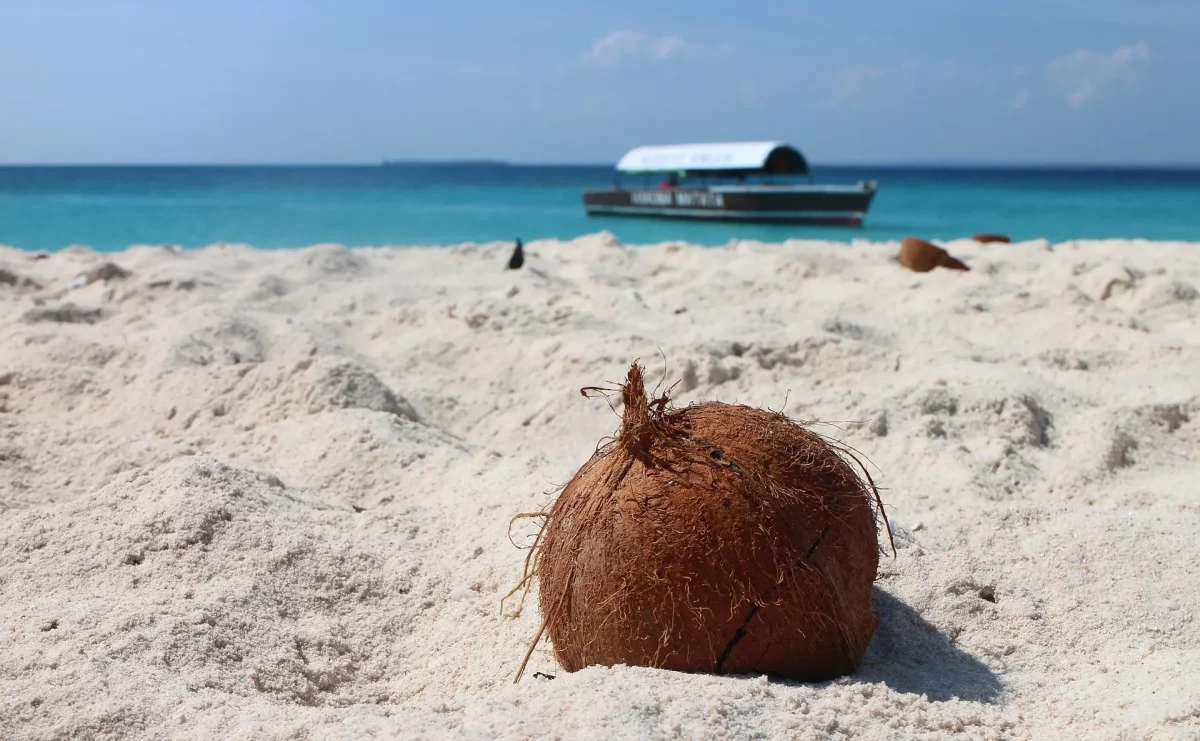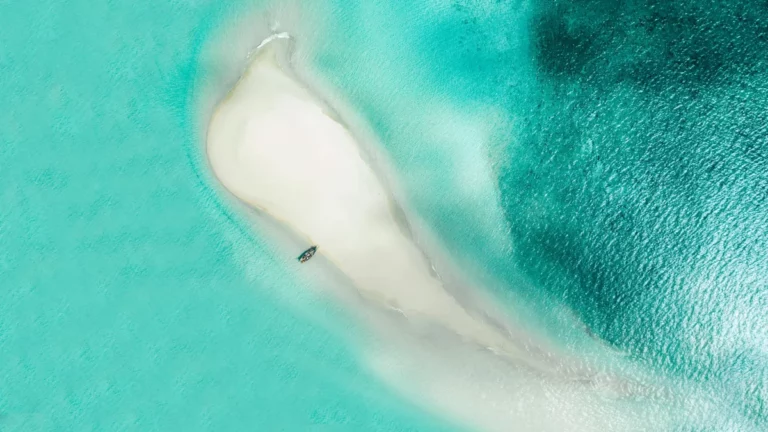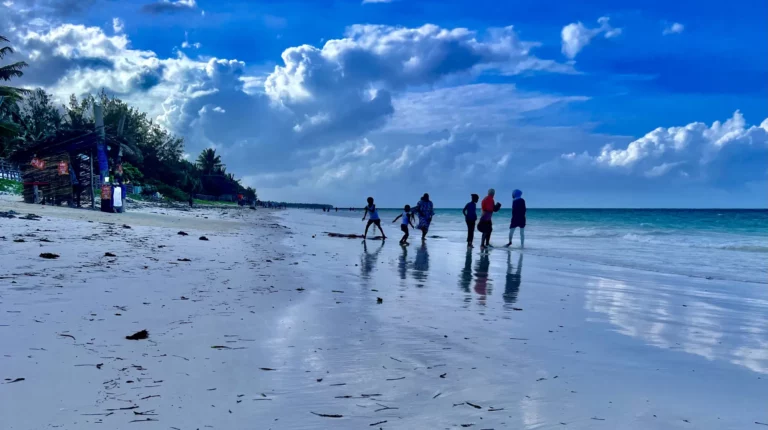The Ultimate Guide to Budget Travel in Zanzibar: Where to Stay, Eat, and Explore Without Breaking the Bank

Zanzibar might be known today for its turquoise waters and luxury resorts, but don’t let that polished image fool you—long before the high-end tourism boom, Zanzibar was the ultimate off-the-beaten-path haven for budget travelers. At the turn of the century, this Indian Ocean archipelago attracted a different kind of visitor: sun-chasing backpackers who roamed its untamed beaches and ancient alleys long before most of the roads were paved. Back then, there was just one ATM on the entire island, and reaching it often meant a sweaty journey through Stone Town’s winding lanes. Outside the capital, accommodation consisted mainly of cheap beachside hostels—simple huts with mosquito nets, shared bathrooms, and unbeatable sunrise views.
That raw, authentic spirit hasn’t disappeared—it’s just been tucked away behind the newer resort façades. If you’re traveling on a budget today, Zanzibar still delivers in full: a vibrant mix of affordable accommodation, rich street food culture, low-cost adventures, and immersion into the daily rhythm of island life. In fact, it’s often the budget traveler who sees the real Zanzibar—less filtered, more connected, and far more memorable.
Whether you’re couchsurfing in Stone Town, bargaining for street food at Forodhani Gardens, or hopping on a dalla-dalla to reach your next beach stop, this guide covers everything you need to know about discovering Zanzibar without draining your wallet.
Budget Accommodation in Zanzibar: Sleep Cheap and Stay Cool
Backpacker Hostels in Stone Town
Stone Town is not just a historical gem—it’s also the most budget-friendly base for exploring the island. Here, you’ll find several hostels and guesthouses offering beds from as low as $10–$15 per night.
Lost & Found Hostel is a top choice for backpackers. Located near the Old Fort, it offers dorm beds with lockers, reliable Wi-Fi, and a communal vibe perfect for meeting fellow travelers. Prices start at $14 per night.
Jambo Guesthouse is another great pick, with rooms starting at $20. It’s family-run and known for its friendly service and rooftop breakfast views.
Shoki Shoki House offers quirky décor and a relaxed vibe just off Gizenga Street. A dorm bed or simple private room will run you around $18–$25.
Cheap Beach Bungalows and Hostels

Budget-friendly beach stays are not just a fantasy in Zanzibar—they’re very real. The trick is to look beyond the five-star resorts and focus on local-run lodges and backpacker hotspots.
Paje: Head to Drifters Backpackers Hostel, a few steps from the beach, with dorms starting at $12 and private bandas from $25. There’s an on-site bar, communal kitchen, and kite-surfing lessons at reduced rates.
Jambiani: A laid-back village with charm and budget prices. Blue Earth Village offers eco-friendly dorms and private rooms for $15–$30. The community vibe and yoga classes make it ideal for long-term travelers.
Nungwi: At the northern tip, Makofi Guest House is a backpacker favorite with dorms from $15 and doubles from $30. It’s steps from the beach, with a communal dinner served nightly and plenty of hammocks for chilling.
Kendwa: More relaxed than Nungwi, but with affordable stays like Kendwa Rocks (budget rooms section) offering dorms and simple rooms from $25.
Michamvi: Quieter and perfect for peace-seekers. Sagando Bungalows has simple huts from $20, with direct beach access and a reggae-bar atmosphere.
Eating Well on a Budget: Street Food and Local Restaurants
Street Food Markets in Stone Town
Eating on the cheap doesn’t mean missing out—Zanzibar’s street food is legendary, and it offers a flavorful crash course in Swahili culture.
Forodhani Night Market is the heart of Zanzibar’s budget food scene. By sundown, the seafront park turns into a sizzling marketplace of grilled meats, seafood skewers, Zanzibar pizzas, sugarcane juice, and samosas. A filling meal here will cost you between $1 and $3.
Tip: Go where the locals queue. Ask for “chapati and beans” or try grilled octopus fresh off the coals.

Local Eateries and Cheap Restaurants
Lukmaan Restaurant is practically a Stone Town institution. With heaped plates of pilau rice, fish curry, stewed okra, and passion juice—all for under $5—it’s where budget travelers feast like kings.
The Passing Show Hotel is another local favorite serving Zanzibari and Indian dishes. It’s basic, bustling, and budget-friendly.
In Paje, try Mr. Kahawa—while a bit pricier, the beachside view and hearty breakfasts ($4–$7) make it worth it. For local fare, head to the village and eat where the locals do—small eateries offer ugali, chapati, and fish for under $3.
In Jambiani, Bahari Pizza Restaurant serves up cheap wood-fired pizzas and local dishes for around $4–$6.
In Nungwi, skip the beachfront resorts and try inland diners like Mama Mia’s (local, not Italian!), where a seafood plate is under $5.
Eating on a budget in Zanzibar not only saves you money—it immerses you in the everyday life of the island. You’ll be chatting with locals, learning Swahili phrases, and discovering that the heart of Zanzibar beats far from the buffets.
Getting to and Around Zanzibar on a Budget
Budget Travel to Zanzibar

If you’re coming from mainland Tanzania, ferries from Dar es Salaam are your cheapest bet. Azam Marine Ferries and Kilimanjaro Fast Ferries run multiple daily departures from the Dar es Salaam port to Zanzibar’s Malindi Terminal in Stone Town. A one-way ticket costs about $35 for non-residents and takes around 2 hours. It’s best to book online or directly at the official counters—just beware of unofficial agents and touts around the ferry terminal.
From Kenya or further afield, keep an eye out for budget flights. Fly540, Precision Air, and Air Tanzania operate affordable routes from Nairobi, Arusha, or Mombasa to Zanzibar. If you book early or travel off-peak, you can sometimes score tickets for under $100 one-way with regional carriers.
Alternatively, if you’re traveling on a tighter budget or prefer overland adventure, you can take a long-distance bus from Nairobi or Mombasa to Dar es Salaam, then catch the ferry to Zanzibar. Several reliable companies, such as Tahmeed, Modern Coast, and Raha Leo, run daily services. The journey from Nairobi to Dar takes around 15–18 hours, while from Mombasa it’s closer to 8–10 hours. Prices range from $20 to $35, depending on the class and company. While it’s a long ride, it’s a scenic and cost-effective way to travel—especially if you’re backpacking through East Africa.
Getting Around Zanzibar on a Budget
Dalla-dallas are your cheapest mode of transport on the island. These converted minibuses operate on fixed routes and cost as little as 1,000 TZS (around $0.40). They’re crowded and chaotic but also authentic and adventurous.
Shared taxis and boda-bodas (motorbike taxis) are slightly more expensive but still budget-friendly. Always negotiate fares before hopping in.
For ultimate freedom, consider renting a scooter, which goes for around $15–$20/day. Just carry an international driving permit and ride safely.
Free and Cheap Things to Do in Zanzibar
Explore Stone Town on Foot

Stone Town is a living museum. Wander its maze-like alleys, admire the ornate doors, visit the Old Dispensary and Anglican Cathedral—all without spending a shilling. Free walking tours are often offered by hostels or arranged through Couchsurfing meetups.
Visit the Slave Market and Museums (on a Budget)
The Old Slave Market entry is around $5. It’s an emotional, essential part of Zanzibar’s story. The Palace Museum and House of Wonders (when reopened) also charge small fees—usually $2–$5 per site.
Beach Days are Always Free
Whether it’s Kendwa’s sunset shores, Jambiani’s quiet sands, or the postcard views of Paje, Zanzibar’s beaches don’t cost a thing to enjoy. Just bring sunscreen and plenty of water.
Cheap Tours and Excursions in Zanzibar

Zanzibar offers a wide range of experiences, and you don’t need deep pockets to enjoy them. While private tours can be pricey, there are plenty of group deals and DIY options that open the door to unforgettable adventures at a fraction of the cost. Whether you’re snorkeling with dolphins, wandering through mangrove forests, or exploring historic ruins, budget-conscious travelers can still access the island’s best activities. The key is to link up with fellow backpackers and bargain smartly.
Exploring Prison Island on a Budget
Just a 20-minute boat ride from Stone Town, Prison Island (Changuu) is one of Zanzibar’s most popular day-trip destinations. Known for its historic quarantine station and the giant Aldabra tortoises that roam its grounds, the island combines nature, history, and beach relaxation in one short outing. Tour operators around the harbor often quote inflated prices to solo travelers, but if you team up with others—either from your hostel or the Stone Town streets—you can usually negotiate a group rate of $10–$15 per person, including the return boat trip and island entrance fee. Avoid booking online unless necessary; it’s cheaper to arrange this in person.
Mnemba Atoll: Budget Snorkeling Paradise
If snorkeling in crystal-clear waters teeming with marine life is on your wishlist, Mnemba Atoll delivers big time. Most of the expensive beachfront hotels will charge upwards of $50–$70 for organized tours, but local boatmen in Nungwi, Kendwa, or even Matemwe can offer the same experience at a fraction of the cost—as low as $20–$25 per person if you negotiate a group rate on the beach.
The trip usually includes a few hours of snorkeling around the reef, dolphin sightings en route, and fresh tropical fruit served onboard. For a few extra dollars, you can often get snorkel gear included, too. Just make sure to agree on the price before setting sail and confirm whether gear, snacks, and park fees are included.
Jozani Forest Reserve: Monkeys and Mangroves

For nature lovers, a visit to Jozani Chwaka Bay National Park is one of the best low-cost activities in Zanzibar. The forest is home to the endangered Red Colobus monkey, found only in Zanzibar, as well as a network of mangrove boardwalks and lush indigenous flora. Entry is a flat $10 per person, and that includes a guided tour with a local park ranger—no haggling required. The tour lasts about an hour and a half and includes the forest, the mangrove walk, and often a detour to a small butterfly center nearby. It’s one of the island’s most educational and ecologically rich experiences—and an incredible value for the price.
Free and Volunteer-Led Walking Tours
Many hostels in Stone Town and the beach villages occasionally organize free walking tours, led either by volunteers or local guides looking for tips rather than formal fees. These tours often bring you to hidden alleys, lesser-known spice stalls, quiet mosques, or local art shops, giving you a perspective that’s impossible to get on a paid tour bus.
To find these opportunities, ask at your hostel’s front desk, or check message boards in backpacker cafés. You can also connect with the local traveler community through Facebook groups like Backpackers in Zanzibar or Zanzibar Travel Tips. These groups are goldmines for up-to-date advice on cheap tours, ride shares, or even invitations to group trips.
Insider Tip: Team Up for Discounts
The simplest way to reduce tour costs in Zanzibar? Find your tribe. Whether it’s someone you met over a beach bonfire or your dorm bunkmate, grouping up can drastically cut per-person costs on excursions. Many tour guides and operators are willing to offer steep discounts for groups of 4–6 people or more. Don’t hesitate to negotiate; it’s part of the culture, and you’ll often be surprised at how low the price can go when you show some Swahili charm and a friendly smile.
Budget Nightlife in Zanzibar

Local Bars and Pubs
Forget expensive resort bars—Zanzibar’s local watering holes are lively, social, and cost next to nothing.
In Stone Town, check out Garage Club for Afrobeat and reggae nights, with beers at $2. Tatu offers free entry and live music on weekends.
In Paje, B4 Beach Club and Jambo Bar throw reggae nights and beach bonfires. Drinks cost $1.50–$3. New Teddy’s on the Beach often has happy hour deals and themed parties.
In Jambiani, Coral Rock Hotel offers beachfront parties with DJs, and their drinks are fairly priced compared to upscale resorts.
Budget Beach Parties
Kendwa’s monthly Full Moon Party at Kendwa Rocks is a must. While drinks and food can add up, entry is free if you arrive early, and you can pre-game at budget-friendly hostels nearby.
In Nungwi, nightlife tends to spill over from beach bars like Coco Cabana and Cholo’s, where locals and backpackers mingle till dawn.
Safety Tips for Budget Travelers
Zanzibar is a laid-back and welcoming destination, but like any place, budget travelers should keep their wits about them. Staying safe is mostly a matter of being sensible and aware of your surroundings. Here’s what to keep in mind while exploring the island on a shoestring.
Stay Visible After Dark

While Zanzibar’s streets are mostly peaceful, it’s best to avoid walking alone late at night, especially in Stone Town’s narrow alleys or along isolated beach paths. Stick to well-lit areas or travel with a group, particularly if you’re unfamiliar with the neighborhood.
Keep a Low Profile
Zanzibar is not a hotspot for theft, but flashing expensive cameras, smartphones, or wads of cash can attract the wrong kind of attention. Keep valuables out of sight, and use a money belt or a secure inner pocket when moving through crowded areas like ferry terminals or local markets.
Choose Safe Transport
After dark, registered taxis or hotel-arranged drivers are the safest choice for getting around. Avoid accepting rides from strangers, and always agree on a fare before getting in. In more remote areas, ask your accommodation to arrange reliable transport.
Scooter Safety
If you’re renting a scooter—a popular choice for budget travelers—always wear a helmet and drive cautiously. Zanzibar’s roads can be sandy, uneven, and occasionally chaotic. Local driving styles and unexpected livestock crossings add to the unpredictability, so defensive driving is a must.
Water and Food Hygiene
Tap water is not safe to drink, so stick to bottled water or refillable bottles from filtered dispensers at your hostel. If you have a sensitive stomach, avoid raw salads and ice in street drinks, especially in inland areas with limited refrigeration. Zanzibar’s street food is mostly safe, but it’s best enjoyed when freshly cooked and served hot.
The Hostel Advantage
Staying in hostels and guesthouses adds an extra layer of safety. Staff are usually happy to share local tips, arrange secure transport, and advise you on which areas to avoid. Most places also provide lockers for your valuables, and being around other travelers means you’re rarely navigating solo.
General Travel Tips for Budget Travelers in Zanzibar
Stretching your budget in Zanzibar isn’t just about cutting costs—it’s about being smart, prepared, and tuned into local ways of doing things. These practical tips will help you travel farther and deeper, while spending less.
Always Carry Local Cash
Tanzanian Shillings (TZS) are the primary currency, and many budget eateries, small shops, and local transport operators do not accept cards. ATMs are available in Stone Town and major towns, but can be scarce in beach villages, so plan ahead and withdraw enough cash before heading out.
Get a Local SIM Card
Staying connected makes travel smoother. Zantel and Airtel offer SIM cards for around $2, with affordable data bundles that help with maps, ride-hailing, and booking accommodations on the go. You’ll find SIM vendors at the airport, ferry terminal, or local shops in town.
Learn Basic Swahili
Picking up a few Swahili phrases—like “Asante” (thank you), “Bei gani?” (how much?), and “Habari” (hello)—goes a long way. Locals appreciate the effort, and it often helps you get better prices and warmer service in markets, taxis, and small restaurants.
Travel in Shoulder Season
If you’re watching your wallet, avoid high season—typically December to February and July to August—when prices for accommodation and tours spike. The shoulder months, like March, May, and early November, bring lower costs, fewer crowds, and still plenty of sunshine.
Negotiate—It’s Expected

Haggling is part of the culture in Zanzibar. Whether you’re bargaining for a souvenir at the market, a taxi ride, or a room in a small guesthouse, always negotiate politely. Long-term travelers often get discounts on accommodation if they ask upfront.
Bring a Refillable Water Bottle
To cut costs and reduce plastic waste, carry a refillable water bottle. Many hostels and cafés offer filtered water stations, saving you from buying endless plastic bottles and keeping you hydrated under the tropical sun.
Use the Right Travel Apps
Smart planning saves money. Apps like Rome2Rio help you find the cheapest transport options across the island. Maps.me provides offline navigation—ideal for areas with patchy service—and Hostelworld is great for discovering highly-rated budget stays. A little digital prep can unlock serious savings.
Why Budget Travel in Zanzibar Is Worth It
Traveling Zanzibar on a budget doesn’t mean you’re missing out—it often means you’re experiencing more. You’ll eat where the locals eat, dance where the locals party, and explore the island in a way that’s grounded, authentic, and immersive.
Backpacker travel brings you face-to-face with the real Zanzibar, beyond the walls of luxury resorts. It’s in the smoky aroma of grilled mishkaki in a side street. It’s in the laughter shared on a dalla-dalla. It’s in the barefoot walks at sunset on a beach you share with fishermen.
Zanzibar is paradise—but it’s not reserved for the wealthy. With this guide in hand, your dream island escape is not only possible—it’s well within reach.





